Kickboxing refers to sport-fighting using kicks and punches and sometimes throws and bows representing a certain martial art or can be practiced for general fitness, or as a full-contact sport. In the full contact version of the sport the male boxers are bare chested, barefoot and wear boxing trunks. The female boxers sometimes wear a tank top and shorts. Kickboxing is sometimes practiced as an independent style, but in many cases kickboxing is just an event and set of rules of by which martial artists of other styles may compete openly. Typically kickboxing in many competitions is a standing fight sport and does not allow continuation of the fight once the fight has reached the ground, however some styles may still train in this component for example; sanshou especially in the military and police and so must be adapted for kickboxing tournaments as well as many Japanese martial arts. Kickboxing can be attributed to K series of fighting styles. There are different rules for different kinds of kick-boxing. One can start at any age, but until 18 years old, a helmet is strongly recommended.
Forms of kickboxing that have been labelled under this term include:
- Adithada (Indian kickboxing) — A form of kickboxing that uses knee, elbow and forehead strikes
- Lethwei (Burmese Kickboxing) — Traditional Burmese martial arts of which has now grown into a popular kickboxing event with strong emphasis on knee, elbow strikes and head butt. Any part of the body may be used to strike and be struck. It us also known as Bando kickboxing.
- Pradal Serey (Khmer kickboxing) — A possible predecessor of Muay Thai
- Muay Thai (Thai boxing) — Traditional Thai martial art of which has now grown into a popular kickboxing event with strong emphasis on knee and elbow strikes
- Japanese kickboxing — Similar to Muay Thai, but different point system is taken (e.g. K-1).
- American kickboxing — Similar to Japanese kickboxing and Full contact karate, but different point system is taken
- Full Contact Karate — Most of the time padding and in some cases body armor is used and is the applicable component of karate like many other styles which also include routines training.
- Savate (French kickboxing) — Allows the use of shoes
- Sanshou/Sanda (Chinese kickboxing) — The applicable component of wushu/kung fu of which Takedowns and throws are legal in competition as well as all other sorts of striking (use of arms and legs).
- Shoot boxing — A Japanese form of kickboxing which allows throwing and submission while standing similar to San Shou
- Yaw-Yan (Filipino Kickboxing) — Sayaw ng Kamatayan (Dance of Death) is the proper name for Yaw-Yan, a Filipino martial art developed by Napoleon Fernandez. The art resembles Muay Thai in a sense, but differs in the hip torquing motion as well as downward-cutting of its kicks.
There are many additional derivatives of these forms, as well as combined styles which have been used in specific competitions (e.g. K-1). The rules of 'kickboxing' also vary between these different styles.
The term kickboxing is disputed and has become more associated with the Japanese and American variants. It must be noted that many of the above styles do not consider themselves to be 'kickboxing' as such, although the public uses the term generically to refer to all these martial arts. The term itself was created by the Japanese boxing promoter Osamu Noguchi for a variant of Muay Thai and Karate that he created in the 1950s; this term was later used by the American variant. When used by the practitioners of these two styles, it tends to refer to them specifically rather than the martial arts they were derived from.
History
Japanese Kickboxing
On December 20, 1959, a Muay Thai match among Thai fighters was held at Tokyo Asakusa town hall in Japan. Tatsuo Yamada who had established "Nihon Kempo Karate-do" was interested in Muay Thai because he wanted to perform Karate matches in Full-contact rules since practitioners are not allowed to hit each other directly in Karate matches. At this time, it was unimaginable to hit each other in Karate matches in Japan. He had already announced his planning which was named "The draft principles of project of establishment of a new sport and its industrialization" in November, 1959, and he put forward a new sport "Karate-boxing" which was a tentative name then. It is still unknown that Thai fighters were invited by Yamada, but it is clear that Yamada was the only karateka who was really interested in Muay Thai. Yamada invited a Thai fighter who was the champion of Muay Thai formerly as his son Kan Yamada's sparring partner, and started studying Muay Thai. At this time, the Thai fighter was taken by Osamu Noguchi who was a promoter of boxing and was also interested in Muay Thai. For example, the Thai fighter's photo was on the magazine "The Primer of Nihon Kempo Karate-do, the first number" which was published by Yamada.
There were "Karate vs. Muay Thai fights" February 12, 1963. The 3 karate fighters from Oyama Dojo (Kyokushin later) went to the Lumpinee Boxing Stadium in Thailand, and fought against 3 Muay Thai fighters. The 3 karate fighters' names are Tadashi Nakamura, Kenji Kurosaki and Akio Fujihira (as known as Noboru Osawa). Japan won by 2-1 then. Noguchi and Kenji Kurosaki (Kyokushin karate instructor) studied Muay thai and developed a combined martial art which Noguchi named kick boxing. However, throwing and butting were allowed in the beginning to distinguish from Muay Thai style. This was repealed later. The Kickboxing Association the first kickboxing sanctioning body was founded by Osamu Noguchi in 1966 soon after that. Then the first kickboxing event was held in Osaka, April 11, 1966. Tatsu Yamada died in 1967, but his dojo changed its name to Suginami Gym, and kept sending kickboxers off to support kickboxing.
Kickboxing boomed and became popular in Japan as it began to be broadcast on TV. Tadashi Sawamura was an especially popular early kickboxer. However, the boom was suddenly finished and became unpopular after Sawamura was retired. Kickboxing had not been on TV until K-1 was founded in 1993.
In 1993, as Kazuyoshi Ishii (founder of Seidokan karate) produced K-1 under special kickboxing rules (No elbow and neck wrestling) in 1993, kickboxing became famous again. The sport has spread through North America, Europe, Australia and New Zealand.
Spreading to Europe, Australia, North America and New Zealand
Jan Plas, the Dutch kickboxer, founded Mejiro Gym with some Muay Thai pioneers in the Netherlands in 1978, after he learned kickboxing from Kenji Kurosaki in Japan. Plas also founded NKBB (The Dutch Kickboxing Association), which was the first kickboxing organization in Netherlands, in 1978. The sport took off in the U.S. with the popularity and success of Bill "Superfoot" Wallace" in the 1970s.
Rules
Japanese Kickboxing
This is almost same as Muay Thai but there are differences between them.
- Similarities
- time: three minutes × five rounds
- allowed to attack with elbow
- allowed to attack with knee
- allowed to kick the lower half of the body except crotch
- allowed to do neck-wrestling (folding opponent's head with arms and elbows to attack the opponent's body or head with knee-strikes)
- head butts and throws were banned in 1966 for boxers' safety.
- Differences
- No ram muay before match
- No Thai music during the match
- Interval takes one minute only as same as boxing
- Point system:
- In muay thai, kicking to mid-body and head are scored highly generating a large number of points on judges' scorecards. Moreover, kicking is still judged highly even if the kick was blocked. In contrast, punching is worth fewer points. In kickboxing punches and kicks are held in closer esteem.
American style kickboxing
These are rules used in American and Australian Full Contact Karate.
- Opponents are allowed to hit each other with fists and feet, striking above the hip
- Using elbows or knees is forbidden and the use of the shins is seldom allowed.
- Bouts are usually 3 to 12 rounds (lasting 2 - 3 minutes each) for amateur and professional contests with a 1-minute rest in between rounds.
This is in contrast to Muay Thai where the use of elbows and knees are allowed; in fact some Muay Thai practitioners consider kickboxing a "watered down" version of Muay Thai. Fighters and promoters can agree to various rules including kicks only above the waist, kicks anywhere, no knee strikes, knees only to the body, and so on. American Kickboxing is essentially much a mixture of Western Boxing and Karate.
The round durations and the number of rounds can vary depending on the stipulations agreed to before hand by each fighter or manager. A winner is declared during the bout if there is a submission (fighter quits or fighter's corner throws in the towel), knockout (KO), or referee stoppage (Technical Knock Out, or TKO). If all of the rounds expire with no knockout then the fight is scored by a team of 3 judges. The judges determine a winner based on their scoring of each round. A split decision indicates a disagreement between the judges, while a unanimous decision indicates that all judges saw the fight the same way and all have declared the same winner.
European style kickboxing
Originally, European style kickboxing was formed with Muay thai and Japanese kickboxing.
- time: 3 minutes × 5 rounds
- not allowed to attack with elbow
- allowed to attack with knee
- allowed to kick the lower half of the body except crotch
- allowed to do neck-wrestling but frequency is limited.
- headbutts and throws are not allowed
Technical
Punching Techniques
Common techniques
- Jab - straight punch from the front hand, to either the head or the body, often used in conjunction with the cross
- Cross (Straight punch) - The straight punching whirl by feeling it out-without using target
- Hook - rounded punch to either the head or body in an arching motion, usually not scored in points scoring
- Uppercut - rising punch striking to the chin
| Cross (Right straight punch) here in counterpunch |
Other types
- Cross-counter – a cross-counter is a counterpunch begun immediately after an opponent throws a jab, exploiting the opening in the opponent's position
- Undercut (Drop) - a semi-circular and vertical punch thrown with the rear hand. It is usually when the opponent bobbing or slipping. The strategic utility of the drop relying on body weight can deliver a great deal of power
- Bolo punch - a combination of a wide uppercut/right cross/swing that was delivered seemingly from the floor
| Undercut (Drop) |
Special kickboxing
- Reverse (Back-fist) and Spinning back-fist - straight punch to the Solar Plexus, usually from the back hand, bending the arm at the elbow and then striking to the side of the head, common in light contact
Kicking techniques
Common techniques
- Front Kick or Push Kick - Striking face on with the heel of the foot
- Side Kick - Striking with the side or heel of the foot with leg parallel to the ground, can be performed to either the head or body
- Semi-circular Kick or Forty Five Degree Roundhouse Kick
- Roundhouse Kick or Circle Kick - Striking with the front of the foot or the lower shin to the head or the body in a 'chopping' motion
Other type
- Hook Kick - Extending the leg out to the side of the body, and hooking the leg back to strike the head with eiher the heel or sole
- Crescent Kick and Forward Crescent Kick
- Axe Kick – is a Stomp Kick or Hammer kick. The Stomp Kick normally travel downward, striking with the side or base heel.
- Back Kick – is delivered with the base heel of the foot.
- Sweeping – One foot or both feet of an opponent may be swept depending upon their position, balance and strength.
Spinning versions of the back, side, hook and axe kicks can also be performed along with jumping versions of all kicks
Spinning and flying
- Spinning hook-kick
- Spinning side-kick
- Spinning back-kick
- Jumping front-kick
- Jumping roundhouse-kick
- Jumping side-kick
- Jumping back-kick
| Spinning back-kick with counterpunch |
Kneeing techniques
Basic techniques
- Straight Knee Thrust - Long-range knee kick (front heel kick). This knee strike is delivered with the back or reverse foot against an opponent’s stomach, groin, hip or spine an opponent forward by the neck, shoulder or arm
- Rising Knee Strike – can be delivered with the front or back foot. It makes an explosive snap upwards to strike an opponent’s face, chin, throat or chest.
- Hooking Knee Strike – can be delivered with the front or back foot. It makes a half circle spin and strikes the sides of an opponent
- Side Knee Snap Strike – is a highly-deceptive knee technique used in close-range fighting. The knee is lifted o the toes or lifted up, and is snapped to left and right, striking an opponent’s sensitive knee joints, insides of thighs, groin
Other types
- Jumping Knee Kick or Flying knee kick
- Double Knee Kick
Defense
- Slip - Slipping rotates the body slightly so that an incoming punch passes harmlessly next to the head. As the opponent's punch arrives, the boxer sharply rotates the hips and shoulders. This turns the chin sideways and allows the punch to "slip" past. Muhammed Ali was famous for extremely fast and close slips.
- Bob and weave - bobbing moves the head laterally and beneath an incoming punch. As the opponent's punch arrives, the boxer bends the legs quickly and simultaneously shifts the body either slightly right or left. Once the punch has been evaded, the boxer "weaves" back to an upright position, emerging on either the outside or inside of the opponent's still-extended arm. To move outside the opponent's extended arm is called "bobbing to the outside". To move inside the opponent's extended arm is called "bobbing to the inside".
- Parry/Block - Parrying or blocking uses the boxer's hands as defensive tools to deflect incoming attacks. As the opponent's punch arrives, the boxer delivers a sharp, lateral, open-handed blow to the opponent's wrist or forearm, redirecting the punch.
- The Cover-Up - Covering up is the last opportunity to avoid an incoming strike to an unprotected face or body. Generally speaking, the hands are held high to protect the head and chin and the forearms are tucked against the torso to impede body shots. When protecting the body, the boxer rotates the hips and lets incoming punches "roll" off the guard. To protect the head, the boxer presses both fists against the front of the face with the forearms parallel and facing outwards. This type of guard is weak against attacks from below.
- The Clinch - Clinching is a rough form of grappling and occurs when the distance between both fighters has closed and straight punches cannot be employed. In this situation, the boxer attempts to hold or "tie up" the opponent's hands so he is unable to throw hooks or uppercuts. To perform a clinch, the boxer loops both hands around the outside of the opponent's shoulders, scooping back under the forearms to grasp the opponent's arms tightly against his own body. In this position, the opponent's arms are pinned and cannot be used to attack. Clinching is a temporary match state and is quickly dissipated by the referee.
Guards
There are three main defensive positions (guards or styles) used in boxing. Within each style, there is considerable variation among fighters, as some fighters may have their guard higher for more head protection while others have their guard lower to provide better protection against body punches. Many fighters vary their defensive style throughout a bout in order to adapt to the situation of the moment, choosing the position best suited to protect them.


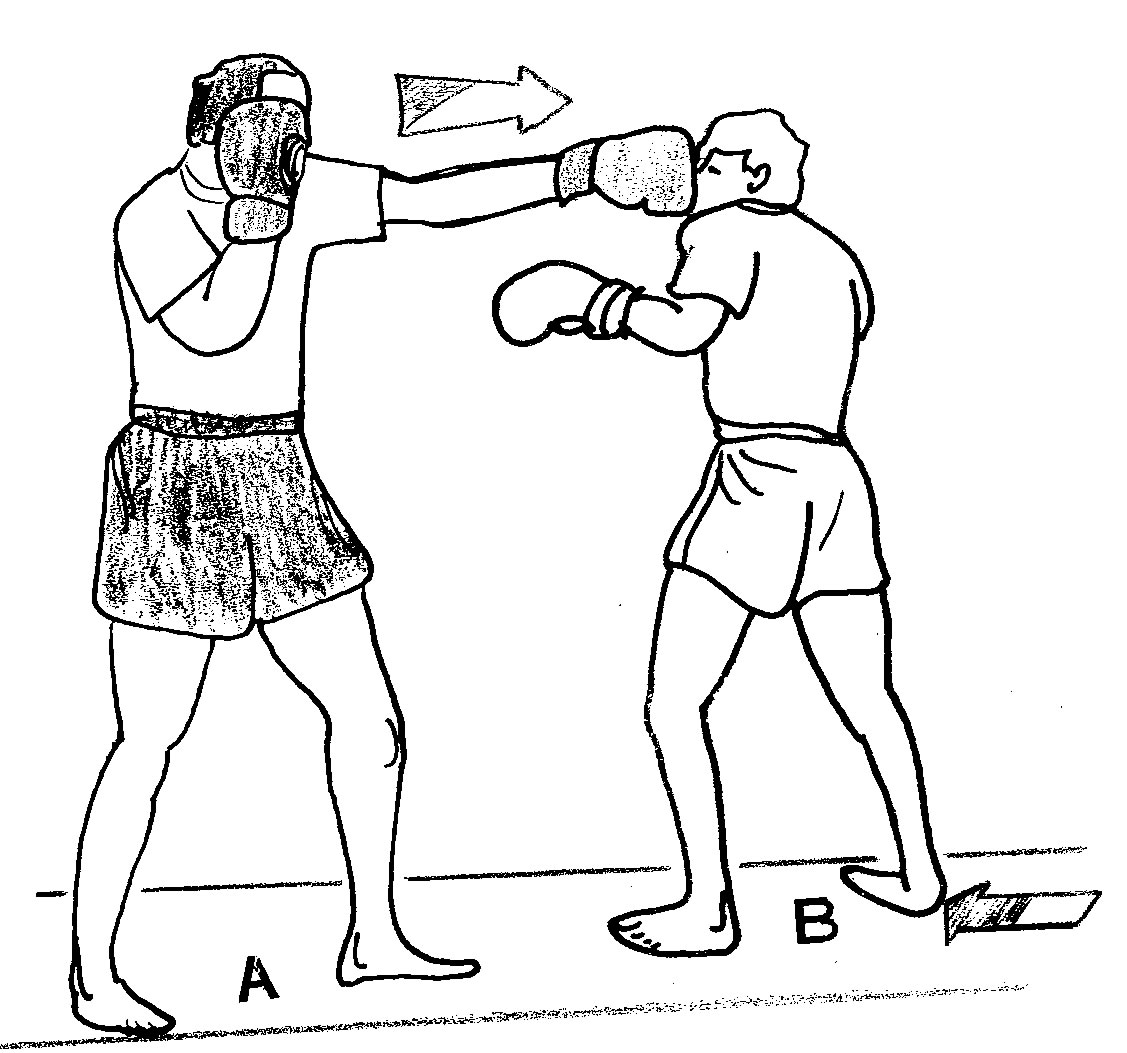
























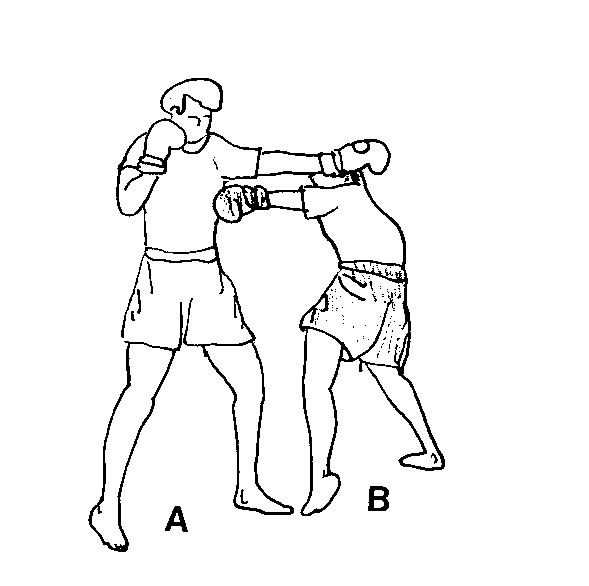


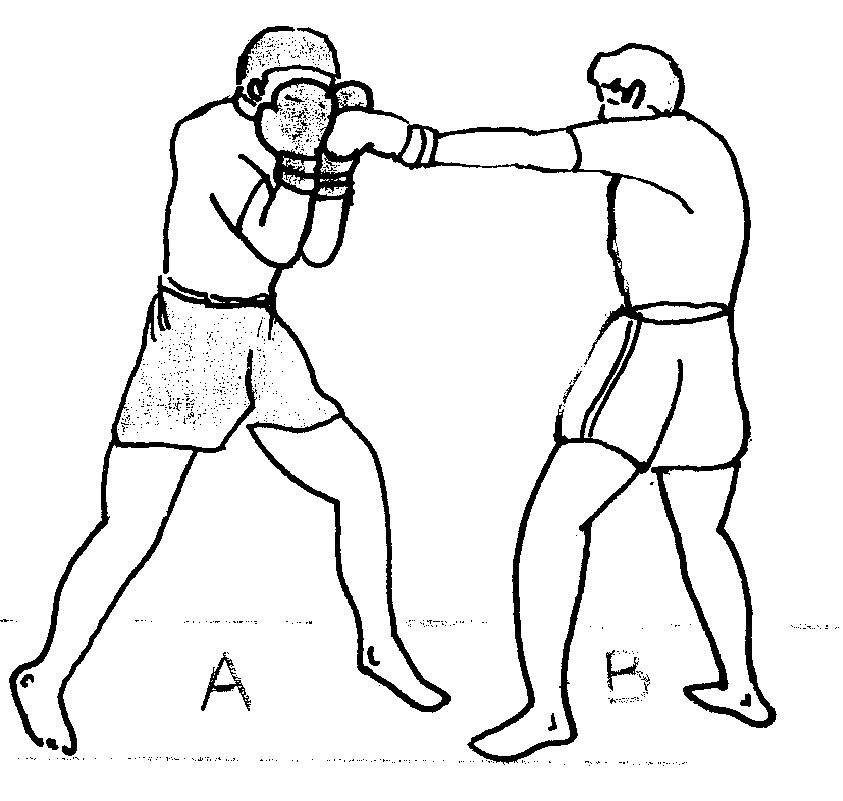
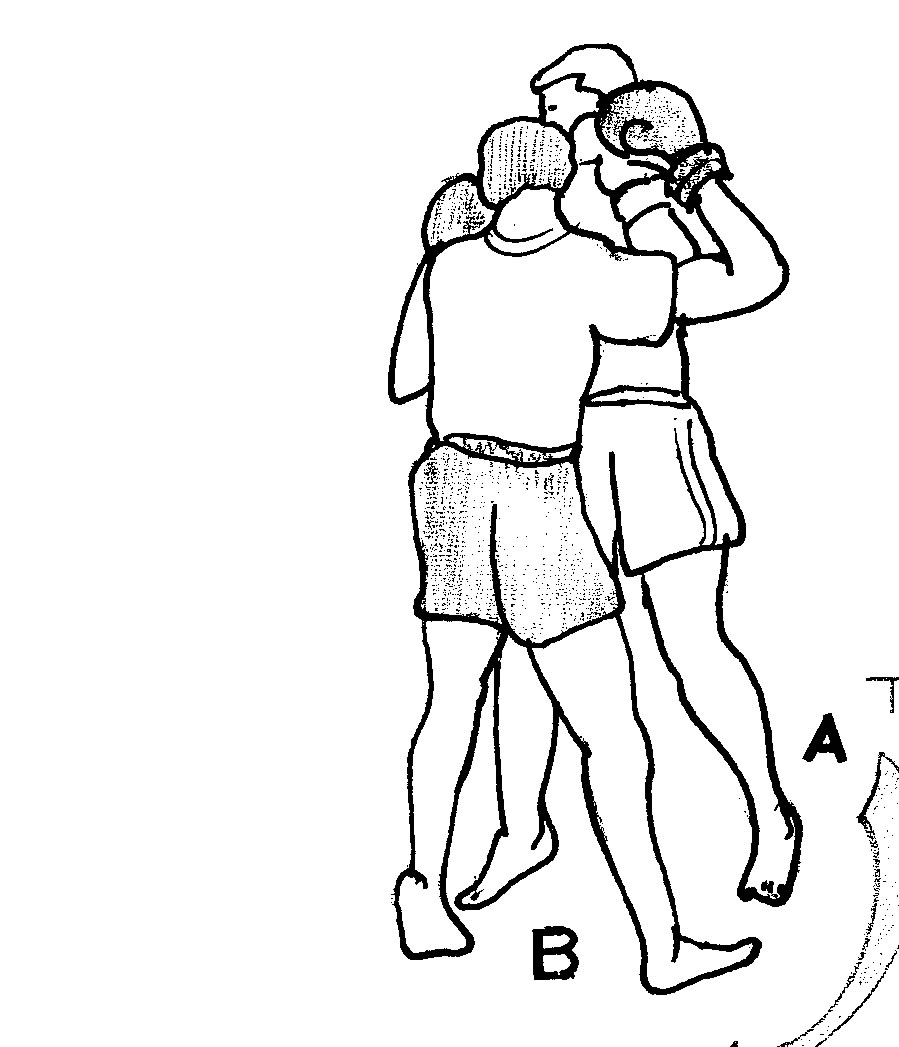




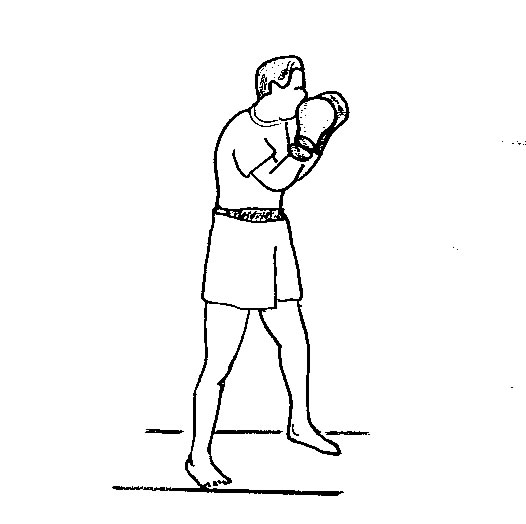







0 comments: